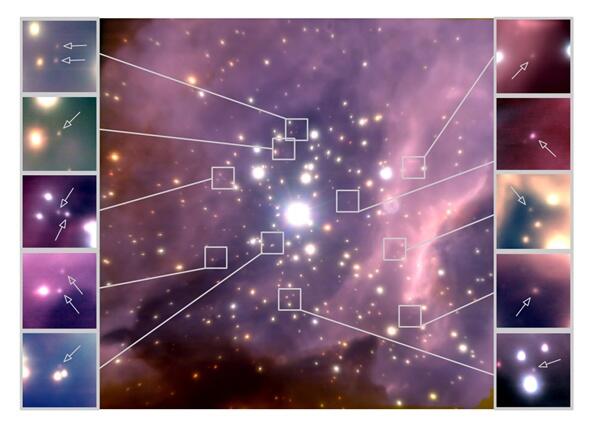It seems that for every star that ignites, there may be a failed star.
A recent study by international researchers, including scientists at York University, found that the Milky Way may be home to 100 billion brown dwarfs — which matches the projected head count of 100 billion stars in our galaxy.
A brown dwarf is a so-called failed star because it never ignites in such a way as to fuse hydrogen into helium, which creates the hot, bright engines we know as stars. Instead, brown dwarfs fuse hydrogen into heavier isotopes like deuterium, if they fuse anything at all. They typically are gaseous objects about 13 Jupiter-masses or above, and form like stars rather than planets. (Most planets start as a rocky body before gathering envelopes of gas.)
The researchers performed an extensive survey of RCW 38, an ultra-dense star-forming cluster around 5,500 light-years away. Most stars that form in the region live fast, gain mass, and die young in a supernova explosion. But within the cluster, the researchers found the same ratio of brown dwarfs as in five other surveyed clusters going back to 2006, many without the same extreme conditions as RCW 38. In other words, there seems to be a fairly uniform distribution of brown dwarfs across the galaxy, regardless of environment.
“We’ve found a lot of brown dwarfs in these clusters. And whatever the cluster type, the brown dwarfs are really common,” Alex Scholz, an astronomer at University of St. Andrews, said in a press release. “Brown dwarfs form alongside stars in clusters, so our work suggests there are a huge number of brown dwarfs out there.”
The bare minimum estimate is that there are 25 billion brown dwarfs in the galaxy. But because brown dwarfs are hard to detect — some are frigid and emit no light at all — that number climbs higher and higher. The third-closest stellar system to us, Luhman 16, consists of two brown dwarfs. Despite being only 6.5 light-years away, the pair went undiscovered until 2013. In fact, of the 40 closest stars (loosely termed), 15 are brown dwarfs and all but one were discovered this century.
Further studies of brown dwarfs and low-mass stars could help determine what causes some stars to thrive and others to fail. In the meantime, we’re not mad. We’re just disappointed.
Source: http://bit.ly/2toidgP











